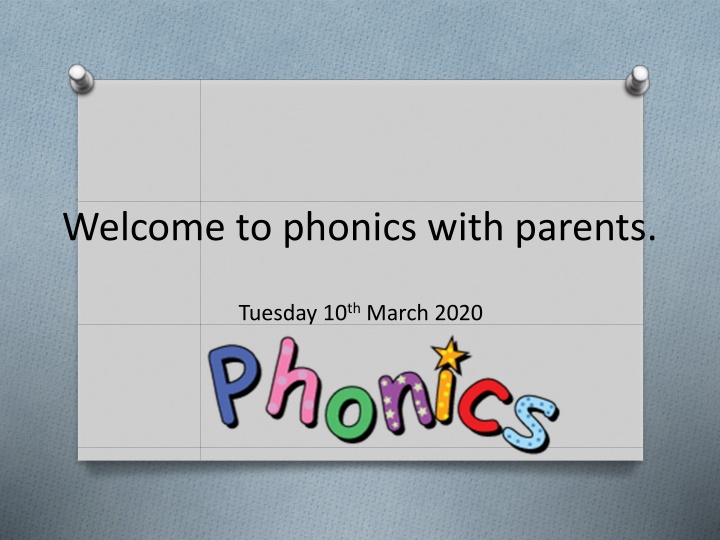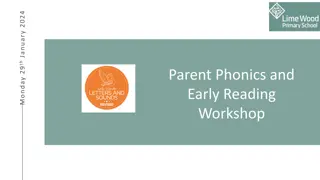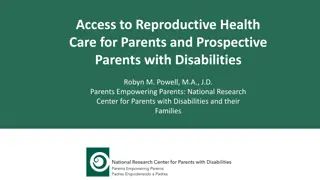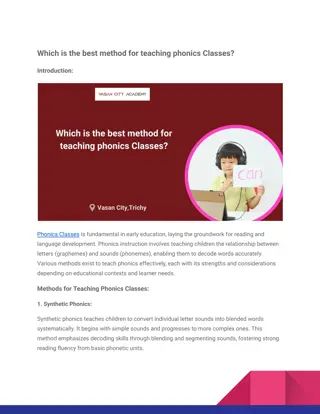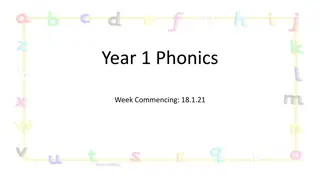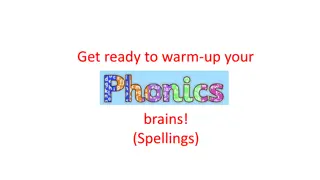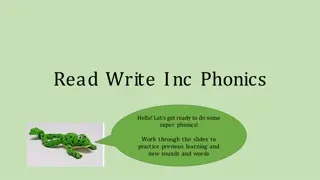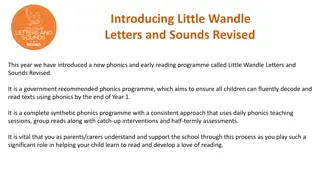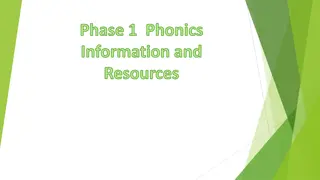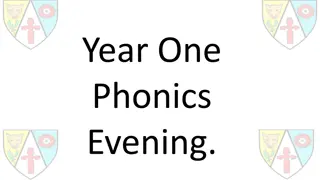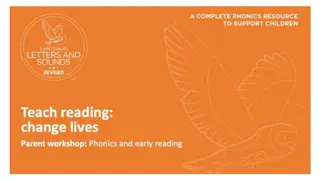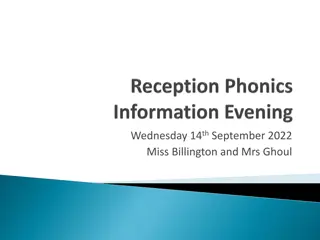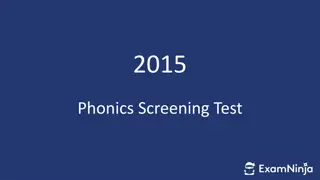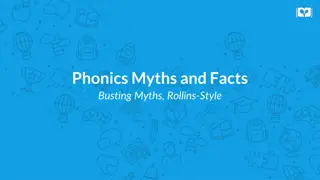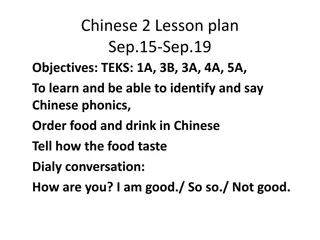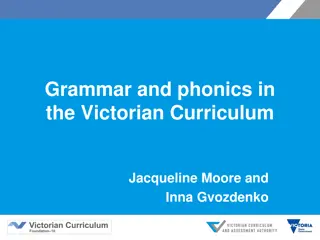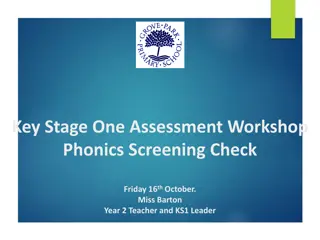Welcome to phonics with parents.
In phonics learning, children start in Nursery and the Early Years Foundation Stage (EYFS), utilizing this knowledge for reading and writing. Through active and engaging 20-minute daily lessons, children recap and learn new sounds, enhancing their decoding skills and reading confidence. The approach involves using phonics in reading and encouraging sound-based approaches in written work. The curriculum breaks the learning into phases, ensuring a strong foundation in each phase before progression. From Phase 2 to Phase 5, children practice and master various sounds and digraphs. Phase 4 emphasizes consolidating knowledge for reading and spelling words with adjacent consonants. Overall, the goal is to foster a love of reading and boost children's literacy skills through phonics learning.
Download Presentation

Please find below an Image/Link to download the presentation.
The content on the website is provided AS IS for your information and personal use only. It may not be sold, licensed, or shared on other websites without obtaining consent from the author.If you encounter any issues during the download, it is possible that the publisher has removed the file from their server.
You are allowed to download the files provided on this website for personal or commercial use, subject to the condition that they are used lawfully. All files are the property of their respective owners.
The content on the website is provided AS IS for your information and personal use only. It may not be sold, licensed, or shared on other websites without obtaining consent from the author.
E N D
Presentation Transcript
Welcome to phonics with parents. Tuesday 10thMarch 2020
At HPS, we hope to promote a love of reading with the children.
What is phonics? O Children begin to learn phonics in Nursery and the EYFS. O Once children begin to learn this knowledge they use it to read and write words. O Children then develop their segmenting/decoding skills. O Phonics enables children to increase their confidence with reading.
How we teach phonics O Our phonics lessons are taught daily and are 20 minutes long. O Taught in an active and lively way. O Recap the sounds learnt before moving on to learn a new sound. Children then have the opportunity to apply this. O We encourage children to use phonics for reading O During English/written work children are encouraged to sound words out
Letters and Sounds O Broken down into phases. O Enables class teachers to really consolidate each phase before moving on to a new phase. O Learn phase 2 and phase 3 in EYFS O Learn phase 5 in year one. O Children in year 1 will practise the phases 2-5, in year 2 they will move onto phase 6
O Phase 2 Phase 2: O Set 1: Set 1: s, a, t, p Set 2: Set 2: i, n, m, d Set 3: Set 3: g, o, c, k Set 4: Set 4: ck, e, u, r Set 5: Set 5: h, b, f, ff, l, ll, ss O Phase 3 Phase 3: O Set 6: Set 6: j, v, w, x O Set 7: Set 7: y, z, zz, qu O Consonant digraphs: Consonant digraphs: ch, sh, th, ng O Vowel digraphs: Vowel digraphs: ai, ee, igh, oa, oo, ar, or, ur, ow, oi, ear, air, ure, er
O Phase 4: O In Phase 4, no new graphemes are introduced. The main aim of this phase is to consolidate the children's knowledge and to help them learn to read and spell words which have adjacent consonants, such as trap, string and milk.
The Phonic Alphabet O The English language has 44 phonemes (sounds) O Children should be taught to write each letter that represents the sound, forming them accurately. O Children are taught to produce the sounds as short as possible, e.g. no uh on the end of d and g . O A range of diagraphs (2 letters that make one sound) and trigraphs (3 letters that make one sound). O https://www.youtube.com/watch?v=-ksblMiliA8&t=204s/
Segmenting and blending OBreaking down words to hear individual sounds (phonemes). OWe use sound buttons and sound zips. cat
Tricky words O Tricky words are words that do not follow the phonics rules therefore need to be learnt as a whole word as they are not fully decodable. O Examples: no, to, he, she, they, said
What is the phonics screening check? O Children in year one throughout the country will be taking part in a phonics screening check in June. O Statutory light touch check on phonics understanding including use of nonsense words. O It is designed to give teachers and parents information on how your child is progressing in phonics. O The check is age appropriate and is given by a teacher who all the children know.
What happens during the check? O The check contains a total of 40 words 20 real words and 20 nonsense words. O Each child will sit one to one and read the words aloud to a familiar adult. O Children will complete the check at their own pace. O If children do not meet the pass mark they will resit the check in year two.
https://www.youtube.com/wat ch?v=IPJ_ZEBh1Bk&t=327s
Geraldine the giraffe and Mr Thorne does phonics. O https://www.youtube.com/watch?v=MTCP8i4Nwgc O https://www.youtube.com/watch?v=Xj1fge3ylWY
How to help at home O Practise sounds your child is working on in class. O Challenge the children to find objects that begin with a certain sound. O Play I Spy with phonemes - not letter names. O Practise letter formation. O Play rhyming bingo, lotto and extend rhyming strings. O Play games with word cards. O Make sentences with word cards. Please come and see us if there is anything we can give you
Useful websites O www. phonicsplay.co.uk O www.bbc.co.uk/home/literacy O www.ictgames.com O www.teachyourmonstertoread.com O www.pinterest.com
Thank you for coming! Any questions?
